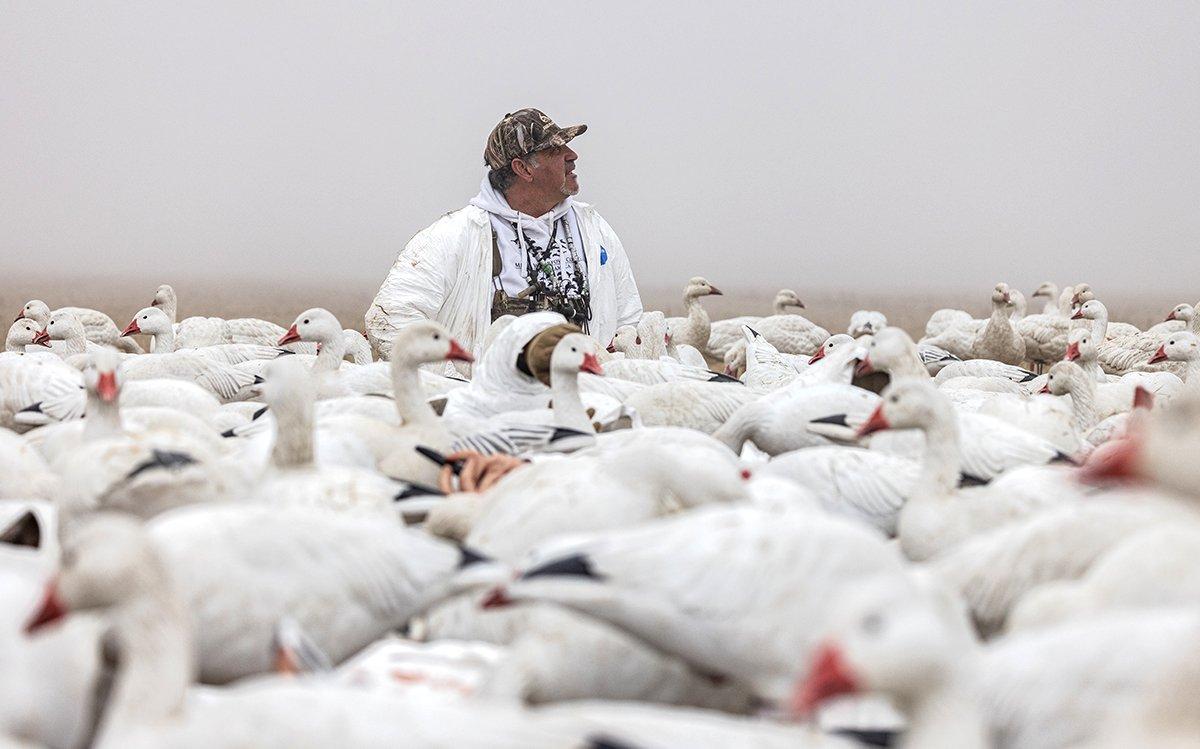Four outfitters share their preferences for calls and setups
When the federal government mandated the Light Goose Conservation Order in the late 1990s, hunters became giddy at the prospect of new opportunities, including being able to use electronic calling devices.
Nowadays, e-callers are standard equipment for serious snow goose geeks. But unless you're intimately familiar with how to use the devices, they can be somewhat daunting. Here's how the pros do it.
Matt Kostka
Kostka owns Top Gun Guide Services Inc., which runs spring snow goose hunts in several states and Saskatchewan. His crew makes its own e-calling boxes and uses large amplifiers and batteries to produce lots of sound on windy days to lure upwind birds.
We usually use an MP3 track so you can raise and lower the volume as the birds decoy, he said. There are tons of different tracks to use — all situational.
Tony Vandemore
A longtime snow goose guide and owner of Habitat Flats, near Sumner, Missouri, Vandemore uses a Snows Down Low e-caller with a four-speaker system. He typically runs two or three callers in each spread.
Typically, I'll have four speakers loud on the upwind side of the spread, he said. The downwind side will have four speakers as well but at a lower volume.
Vandemore likes calling tracks that feature lots of individual barks. Like many snow goose guides, he doesn't mess with mouth calling during spring.
Cooper Olmstead
Olmstead, also of Habitat Flats, runs custom-built four-speaker e-callers.
I'll run two boxes with four speakers each in a spread, so eight speakers total, he said. Usually, (I'll have) one box and four speakers on the downwind side, playing at a quieter, lower volume, with a more individual calling sequence, and then one box and four speakers on the top end of the spread by the blind or pit, playing more of a group calling or roar sound. I usually play it a lot higher to get the birds' attention and then taper it down the closer they get.
Like Vandemore, he doesn't mix live calling with the recordings.
I will at times use an additional directional speaker, like a turtle box, to move around toward the direction the birds are working, and then taper it down or turn it off once they begin to work, he said.
Graham Greseth
The owner of MaXXed Out Guides, Greseth runs spring snow goose hunts in Kansas and South Dakota. Like Vandemore, he also chooses a Snows Down Low e-caller, which he believes delivers the best sound, and four to six speakers.
I like to run them in front of the clients, he said. It helps with your sanity after listening to those tracks day after day. Plus, when those snows key in and finish, they're typically coming right to that speaker, so I don't want them to have to fly over our hide to get at it.
And like the other guides, he eschews live calling during spring.
In my opinion, if playing a recording of live snow geese through a speaker doesn't get them to do it, my call isn't going to persuade them, he said.
Click here for more Realtree waterfowl hunting content. And check us out on Facebook.









